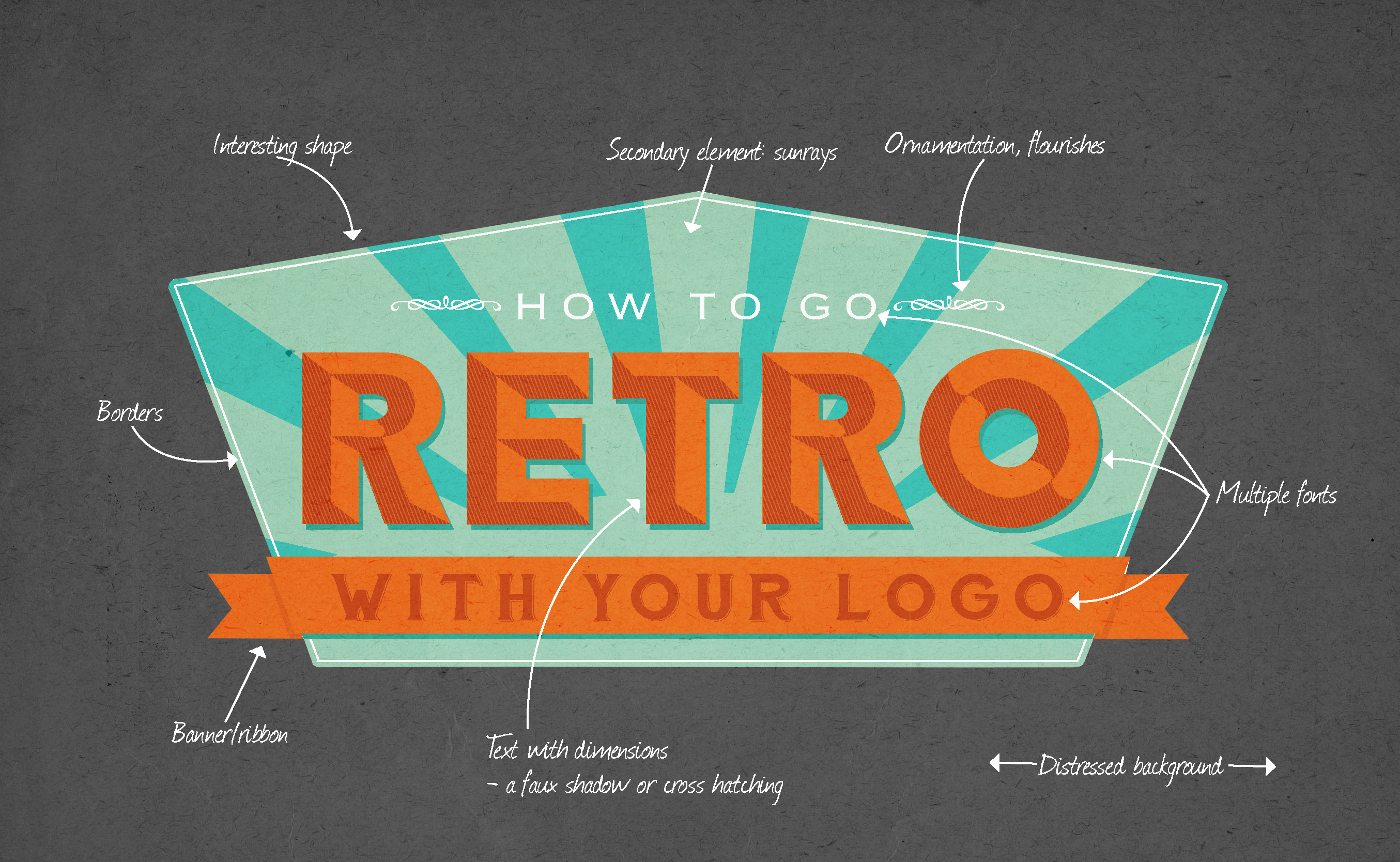I LOVE RETRO. All things retro, I just adore. And I’m not the only one—businesses and organizations often opt to throw it back and create retro-inspired designs. This takes many consumers back to the good ol’ days as retro designs fill them with nostalgic fondness. Retro logos are no different as they appear dependable, long lasting, classy, and friendly all at the same time. So how do you create a retro logo? Well, to answer that question, it helps if you understand a couple things.
First of all, the definition of “retro” is different than “vintage.” Retro basically means inspired by the past. And vintage means literally from the past. When people talk about retro looks and styles, they’re usually referring to the artistic style or genre of pop art that was created and used in the 1940s and 1950s. This was the time when America was really establishing its own brand identity, if you will. Hardworking Americans were stepping up and taking charge both on the battlefield and on the home front, and the need for bold, eye-catching graphics, especially to promote the war efforts, was great. These graphics were easy to reproduce on simple presses, and even after the war, the style stuck.
Retro advertisements and graphics have recently experienced a substantial resurgence in popularity since they stand out distinctly from their modern computer-generated counterparts. We’ve also seen a retro comeback because of the strong correlation with a hardworking American identity and the association to push through even when times are tough. While there are many different retro looks, retro generally implies a design style of at least 15 to 20 years in the past. Therefore, every decade has its own artistic style, but since most people are referring to the Mid-20th Century, and the popular blue-collar aesthetic, I’ll focus on that.
Certain characteristic elements define retro logos, but before I get into that, it helps to have an understanding of the printing limitations that designers had back then. Illustrations and text were flat and simple because they didn’t have the mass printing technology we do today. So woodblocks, linocuts, screen-printing, lithography and engraving were used—and those techniques demand flat designs. Keep that in mind when developing your retro logo. Here’s how to do it:
- Include interesting shapes (like crest/heraldic shapes) layered on top of each other—think badges.
- Add banners or ribbons to give your design that vintage feel.
- Secondary elements such as sunrays, stars, lightning bolts, keys, flags, globes, arrows, transportation, maps, etc. are definitely a blast from the past.
- Ornamentation and flourishes give the design some flare.
- Using multiple fonts at a time and adding text with dimension (use a faux shadow or cross hatching) help take the designs back to another time period. Try using typography as an element and incorporate hand-lettered/hand-scripted text—enhance by adding a slant or arch to it.
- Borders and distressed backgrounds are good graphical elements to integrate since flat and simple illustrations were required back then.
- Some other retro elements you could include in your logo are monograms (think every baseball team logo ever), compartmentalizing information, adding “Est.” as part of the logo, and creating designs that mimic a stamp.

Hopefully this retrogression takes your logo back, and your company forward. So spend some time mastering these retro elements and see where this journey back in time takes your logo. If you’re looking for more inspiration, check out some of these super talented designers that have retro logos down to a T:
